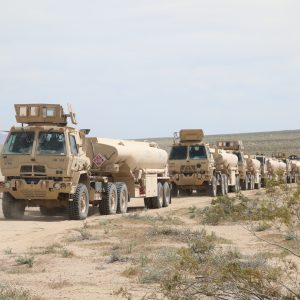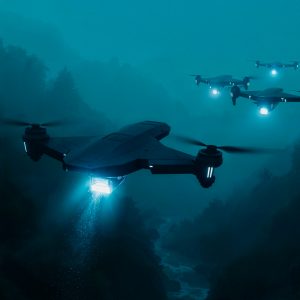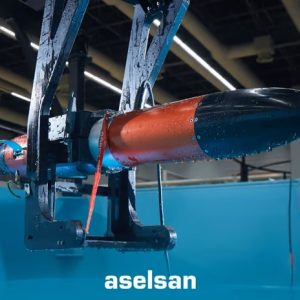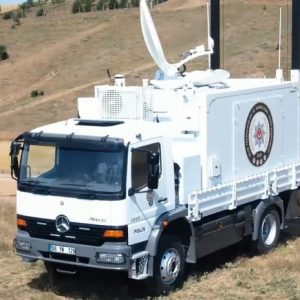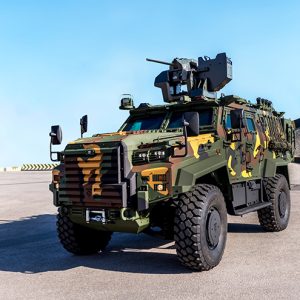KAAN Fighter Aircraft: Türkiye’s Fifth-Generation Air Superiority Jet
Türkiye’s National 5th-Gen Air Superiority Program
The KAAN fighter aircraft, previously designated TF-X, is Türkiye’s flagship fifth-generation air superiority platform under development by Turkish Aerospace Industries (TAI). This program aims to replace the Turkish Air Force’s aging F-16 fleet. The KAAN is optimized for stealth, high-speed performance, and network-centric warfare, placing Türkiye among the few nations capable of producing an indigenous fifth-generation fighter.
Design and Stealth Features
KAAN uses a twin-engine configuration with low-observable shaping to minimize radar cross-section. Its radar-absorbing composite airframe and serpentine inlet ducts shield the engine compressor faces from radar detection. The design benefits from advanced computational fluid dynamics and radar cross-section modeling to balance aerodynamic performance with all-aspect stealth.
Powerplant and Propulsion
The initial production batch will feature two General Electric F110-GE-129 afterburning turbofans, each producing around 29,000 pounds of thrust. Future models will adopt an indigenous Turkish powerplant, ensuring strategic independence from foreign suppliers.
Advanced Avionics Suite
At the heart of KAAN’s combat capabilities lies an ASELSAN-developed Active Electronically Scanned Array (AESA) radar, delivering:
- High-resolution target tracking
- Synthetic aperture radar (SAR) mapping
- Electronic attack (EA) modes
Complementary systems include:
- Integrated Infrared Search and Track (IRST)
- Electro-optical targeting
- Advanced Electronic Warfare (EW) suite
All data streams merge into a unified tactical display, presented on panoramic cockpit screens and via a helmet-mounted cueing system for rapid off-boresight missile targeting.
Weapons and Payload Flexibility
KAAN supports internal weapons bays for stealth-critical missions and external hardpoints for high-load configurations. Supported munitions include:
- Gökdoğan beyond-visual-range air-to-air missile
- Bozdoğan short-range air-to-air missile
- Precision-guided bombs
- Future hypersonic weapons
Loyal Wingman Integration
KAAN is built to operate with unmanned combat aerial vehicles (UCAVs) in loyal wingman roles, enabling:
- Distributed sensor fusion
- Cooperative targeting
- Multi-axis missile engagements
These features improve both survivability and lethality in high-threat environments.
Technical Specifications: KAAN Fighter Aircraft
| Category | Specification |
|---|---|
| Manufacturer | Turkish Aerospace Industries (TAI) |
| Role | Fifth-generation air superiority and multirole fighter |
| Crew | 1 (single-seat) |
| Length | Approx. 21 meters (68.9 ft) |
| Wingspan | Approx. 14 meters (45.9 ft) |
| Height | Approx. 6 meters (19.7 ft) |
| Empty Weight | TBD (estimated 18,000–20,000 kg) |
| Max Takeoff Weight (MTOW) | Estimated 27,000–30,000 kg |
| Powerplant | 2 × General Electric F110-GE-129 turbofans (29,000 lbf thrust each), future indigenous engines planned |
| Maximum Speed | Mach 2.0 (projected) |
| Range | Over 1,100 nautical miles (2,000+ km) with drop tanks |
| Service Ceiling | 55,000 ft (projected) |
| Rate of Climb | Classified, expected high thrust-to-weight ratio |
| Avionics | ASELSAN AESA radar, IRST, electro-optical targeting, advanced EW suite |
| Weapons Bays | 2 internal bays (BVR missiles, PGMs) + 6+ external hardpoints |
| Missile Types | Gökdoğan BVR, Bozdoğan SRAAM, precision-guided bombs, hypersonic weapons (future) |
| Combat Radius | Approx. 600–700 nautical miles in air-to-air configuration |
| Special Features | Stealth shaping, serpentine inlets, loyal wingman UCAV integration, panoramic cockpit display, helmet-mounted cueing |
| First Flight | February 21, 2024 |
| Planned IOC | Before 2033 |
| Export Potential | Offered to trusted allied nations |
Comparative Analysis: KAAN vs Peer Platforms
Against the F-35A Lightning II
While the F-35A Lightning II benefits from a proven stealth profile (radar cross-section estimated at ~0.005 m²) and highly mature avionics, the KAAN fighter aircraft is projected to achieve a top speed of Mach 2.0 compared to the F-35A’s Mach 1.6. With its twin-engine configuration generating a combined thrust of approximately 58,000 lbf versus the F-35A’s single 43,000 lbf engine, KAAN is expected to deliver a superior thrust-to-weight ratio in clean configuration (~1.15 vs ~0.87). Its larger wing area — estimated at 70 m² versus 42.7 m² on the F-35A — also suggests potentially better sustained turn performance and lower wing loading (~385 kg/m² vs ~620 kg/m²).
In Beyond Visual Range (BVR) scenarios, KAAN’s planned integration with loyal wingman UCAVs could enable cooperative targeting beyond 100 km, offering simultaneous multi-axis missile engagements. This doctrine may provide tactical advantages in air dominance missions, where engagement flexibility and distributed lethality are critical.
| Specification | KAAN Fighter Aircraft (Projected) | F-35A Lightning II |
|---|---|---|
| Top Speed | Mach 2.0 (~2,120 km/h) | Mach 1.6 (~1,975 km/h) |
| Engines | 2 × F110-GE-129 (29,000 lbf each) | 1 × F135-PW-100 (43,000 lbf) |
| Total Thrust | 58,000 lbf | 43,000 lbf |
| Thrust-to-Weight Ratio (Clean) | ~1.15 | ~0.87 |
| Wing Area | ~70 m² | 42.7 m² |
| Wing Loading | ~385 kg/m² | ~620 kg/m² |
| Combat Radius | ~1,100+ km (with drop tanks) | ~1,093 km |
| Radar Cross Section (RCS) | Estimated ~0.01–0.02 m² | ~0.005 m² |
| BVR Engagement Range | 100+ km (with UCAV integration) | ~90–100 km (AIM-120D) |
Against the Su-57
The Su-57 leverages thrust-vectoring nozzles and a blended wing–body layout for exceptional post-stall maneuverability. However, the KAAN fighter aircraft applies more disciplined low-observable shaping, which is projected to produce a radar cross-section (RCS) of ~0.01–0.02 m² versus the Su-57’s estimated ~0.1–0.5 m². This difference could allow KAAN to achieve detection and targeting several seconds earlier in beyond-visual-range (BVR) engagements, potentially securing the “first-look, first-shot” advantage.
In close air combat, the Su-57’s supermaneuverability offers an advantage in tight turning fights. Yet KAAN’s integration of high off-boresight (HOBS) missiles like the Bozdoğan, combined with helmet-mounted cueing, allows lethal missile shots at extreme angles — reducing the need for nose-pointing agility. When paired with loyal wingman UCAVs feeding real-time targeting data, KAAN can initiate multi-axis missile attacks that challenge even highly agile adversaries.
| Specification | KAAN Fighter Aircraft (Projected) | Su-57 |
|---|---|---|
| Top Speed | Mach 2.0 (~2,120 km/h) | Mach 2.0 (~2,120 km/h) |
| Engines | 2 × F110-GE-129 (29,000 lbf each) | 2 × AL-41F1 (~33,000 lbf each), future Izdeliye 30 planned |
| Total Thrust | 58,000 lbf | 66,000 lbf |
| Thrust-to-Weight Ratio (Clean) | ~1.15 | ~1.14 |
| Wing Area | ~70 m² | ~78.8 m² |
| Wing Loading | ~385 kg/m² | ~375 kg/m² |
| Radar Cross Section (RCS) | ~0.01–0.02 m² (projected) | ~0.1–0.5 m² (estimated) |
| BVR Engagement Range | 100+ km (with UCAV integration) | ~110–120 km (R-77M) |
| Close-Range Missile | Bozdoğan HOBS (~+70–90° off-boresight) | R-74M2 (~+75–120° off-boresight) |
| Special Capability | Loyal wingman UCAV integration, advanced sensor fusion | Thrust vectoring, supermaneuverability |
Operational Role and NATO Integration
The KAAN fighter aircraft is engineered for seamless NATO combat cloud integration, a network-centric warfare concept where every asset — manned or unmanned — acts as both a sensor and shooter. Through secure datalink communications such as Link-16 and future SATCOM-based tactical networks, KAAN can exchange real-time targeting data, threat libraries, and situational awareness feeds with allied aircraft, naval vessels, and ground-based command centers.
This integration ensures that KAAN does not operate in isolation. For example, an allied AWACS or AEW&C aircraft can relay long-range radar detections directly into KAAN’s mission computer, enabling the pilot to conduct beyond-visual-range (BVR) missile launches without activating onboard radar — preserving stealth. Likewise, KAAN can push its own IRST and passive EW detections into the network, enhancing the collective threat picture for all NATO forces in the area.
Twin-Engine Design and Survivability
The twin-engine configuration provides not only higher total thrust but also redundancy in high-risk missions. If one engine suffers damage from hostile fire, debris ingestion, or mechanical failure, the second engine allows the aircraft to continue the mission or safely return to base — a critical factor in deep-strike sorties where recovery assets may be far from the combat zone. This significantly increases combat persistence in contested environments compared to single-engine platforms.
Modular Architecture for Future Upgrades
KAAN’s avionics, EW systems, and propulsion are designed on a modular open-systems architecture (MOSA). This approach allows rapid integration of:
- New radar generations (e.g., GaN-based AESA modules)
- AI-enhanced electronic warfare suites
- Next-generation engines with higher thrust or fuel efficiency
By avoiding rigid hardware dependencies, Türkiye can extend KAAN’s relevance into the 2050s without complete airframe redesigns.
UCAV Integration and Multi-Axis Operations
Deployed alongside stealth unmanned combat aerial vehicles (UCAVs) in a loyal wingman configuration, KAAN becomes the command node in a multi-axis offensive formation. In such a doctrine:
- UCAVs can act as forward scouts, relaying sensor data without exposing KAAN to immediate threats.
- Multiple UCAVs can launch coordinated missile attacks from different bearings, forcing enemy air defenses to split their engagement priorities.
- Some UCAVs can carry electronic warfare payloads to jam or deceive hostile radars, creating openings for KAAN to strike.
This distributed lethality approach makes defending against KAAN-led formations significantly harder than countering a single aircraft. Even if an adversary detects KAAN, simultaneous threats from UCAVs dilute defensive fire and increase the probability of mission success.
In essence, KAAN’s combination of NATO combat cloud integration, redundant twin-engine propulsion, future-proof modularity, and UCAV-enabled multi-axis tactics positions it not just as a next-generation fighter, but as a force-multiplying combat network hub.
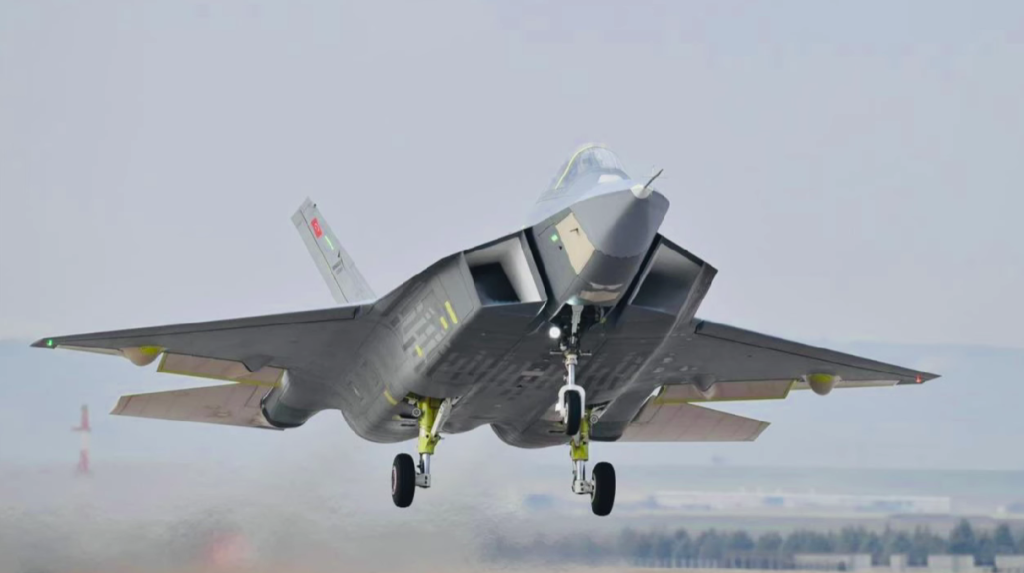
Development Timeline
- March 1, 2023 – Rollout
- February 21, 2024 – First flight
- Early 2030s – Planned serial production
- Before 2033 – Initial operational capability
Conclusion
The KAAN fighter aircraft symbolizes Türkiye’s long-term commitment to sovereign, next-generation air combat power. Combining stealth, speed, advanced avionics, and NATO interoperability, KAAN is positioned to dominate contested airspace well into the 2050s.


